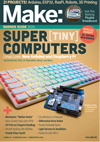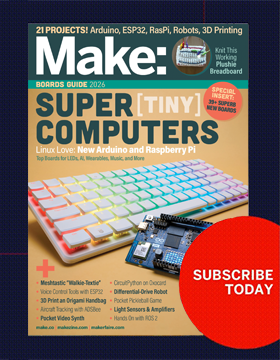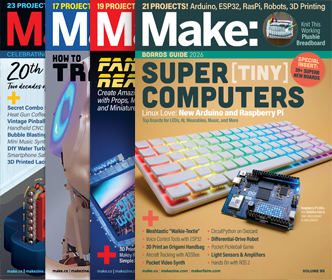
DIY Instruments: Rhythm & Sound
WHAT WILL YOU MAKE?
What’s that you hear? Birds chirping? Cars passing by? Laughter? Sounds are all around you and those sounds you hear are all created by vibrations!
People all around the world use sounds and vibrations to create music. Throughout history, people have used music as a source of joy, to mark important events, and to unite people during difficult times. That’s why music and the instruments that accompany it have so much cultural history and meaning — and is why we often turn to music when we need to feel connected.
In this maker activity, you will:
– Explore sounds
– Make an instrument
– Create a rhythm
WHAT WILL YOU LEARN?
What’s that you hear? Birds chirping? Cars passing by? Laughter? Sounds are all around you and those sounds you hear are all created by vibrations!
People all around the world use sounds and vibrations to create music. Throughout history, people have used music as a source of joy, to mark important events, and to unite people during difficult times. That’s why music and the instruments that accompany it have so much cultural history and meaning — and is why we often turn to music when we need to feel connected.
In this maker activity, you will:
– Explore sounds
– Make an instrument
– Create a rhythm
STEPS
STEP 1
Step 1: Explore Sounds
STEP 2
Step 2: Build a Peruvian Cajón
STEP 3
Step 3: Build a Shaker/Maraca
STEP 4
Step 4: Build your Own
STEP 5
Step 5: Compose
SEE IT IN ACTION
WHAT'S NEXT?
Reflect. After you complete the activity, reflect on your experience:
– How did small changes to your instrument change the sound that it makes?
– Why do you think music and instruments are found throughout the world?
Materials:
- For a Peruvian Cajón:
- cardboard box
- scissors
- writing utensil
- tape
- For a Shaker/Maraca:
- empty bottle or container
- filler (rice, beans, seeds or pebbles)
- Make Your Own:
- pots & pans
- bucket
- spoons
- cans
- tape, etc.
See More Projects in these topics:
Arts & Crafts Engineering MusicSee More Projects from these themes:
Art/Craft Studio Carnival/Theme ParkMaker Camp
Please Note
Your safety is your own responsibility, including proper use of equipment and safety gear, and determining whether you have adequate skill and experience. Power tools, electricity, and other resources used for these projects are dangerous, unless used properly and with adequate precautions, including safety gear and adult supervision. Some illustrative photos do not depict safety precautions or equipment, in order to show the project steps more clearly. Use of the instructions and suggestions found in Maker Camp is at your own risk. Make Community, LLC, disclaims all responsibility for any resulting damage, injury, or expense.
Maker Camp Project Standards
Based on NGSS (Next Generation Science Standards)
National Core Arts Standards
The National Core Arts Standards are a process that guides educators in providing a unified quality arts education for students in Pre-K through high school. These standards provide goals for Dance, Media Arts, Music, Theatre, and Visual Arts with cross-cutting anchors in Creating, Performing, Responding, and Connecting through art. The Anchor Standards include:- Generate and conceptualize artistic ideas and work.
- Organize and develop artistic ideas and work.
- Refine and complete artistic work.
- Select, analyze, and interpret artistic work for presentation.
- Develop and refine artistic techniques and work for presentation.
- Convey meaning through the presentation of artistic work.
- Perceive and analyze artistic work.
- Interpret intent and meaning in artistic work.
- Apply criteria to evaluate artistic work.
- Synthesize and relate knowledge and personal experiences to make art.
- Relate artistic ideas and works with societal, cultural, and historical context to deepen understanding.
CCSS (Common Core State Standards)
The Common Core is a set of high-quality academic standards in mathematics and English language arts/literacy (ELA).Measurement & Data
- Grades K-2
- CCSS.MATH.CONTENT.K.MD.A.1 Describe measurable attributes of objects, such as length or weight. Describe several measurable attributes of a single object.
- CCSS.MATH.CONTENT.1.MD.A.1 Order three objects by length; compare the lengths of two objects indirectly by using a third object.
- CCSS.MATH.CONTENT.1.MD.A.2 Express the length of an object as a whole number of length units, by laying multiple copies of a shorter object (the length unit) end to end; understand that the length measurement of an object is the number of same-size length units that span it with no gaps or overlaps.
- CCSS.MATH.CONTENT.2.MD.A.1 Measure the length of an object by selecting and using appropriate tools such as rulers, yardsticks, meter sticks, and measuring tapes.
- CCSS.MATH.CONTENT.2.MD.A.2 Measure the length of an object twice, using length units of different lengths for the two measurements; describe how the two measurements relate to the size of the unit chosen.
- CCSS.MATH.CONTENT.2.MD.A.3 Estimate lengths using units of inches, feet, centimeters, and meters.
- CCSS.MATH.CONTENT.2.MD.A.4 Measure to determine how much longer one object is than another, expressing the length difference in terms of a standard length unit.
- Grades 3-5
- CCSS.MATH.CONTENT.3.MD.B.3 Draw a scaled picture graph and a scaled bar graph to represent a data set with several categories. Solve one- and two-step "how many more" and "how many less" problems using information presented in scaled bar graphs.
- CCSS.MATH.CONTENT.4.MD.A.1 Know relative sizes of measurement units within one system of units including km, m, cm; kg, g; lb, oz.; l, ml; hr, min, sec. Within a single system of measurement, express measurements in a larger unit in terms of a smaller unit.
- CCSS.MATH.CONTENT.4.MD.C.5 Recognize angles as geometric shapes that are formed wherever two rays share a common endpoint, and understand concepts of angle measurement.
- CCSS.MATH.CONTENT.5.MD.A.1 Convert among different-sized standard measurement units within a given measurement system (e.g., convert 5 cm to 0.05 m), and use these conversions in solving multi-step, real world problems.
- CCSS.MATH.CONTENT.5.MD.C.3 Recognize volume as an attribute of solid figures and understand concepts of volume measurement.
Ratios & Proportional Relationships
- Middle School
- CCSS.MATH.CONTENT.6.RP.A.1 Understand the concept of a ratio and use ratio language to describe a ratio relationship between two quantities.
- CCSS.MATH.CONTENT.6.RP.A.3 Use ratio and rate reasoning to solve real-world and mathematical problems, e.g., by reasoning about tables of equivalent ratios, tape diagrams, double number line diagrams, or equations.
- CCSS.MATH.CONTENT.7.RP.A.1 Compute unit rates associated with ratios of fractions, including ratios of lengths, areas and other quantities measured in like or different units.
- CCSS.MATH.CONTENT.7.RP.A.2 Recognize and represent proportional relationships between quantities.
National Core Arts Standards
The National Core Arts Standards are a process that guides educators in providing a unified quality arts education for students in Pre-K through high school. Also see Standards with cross-cutting anchors in Creating, Performing, Responding, and Connecting through art for Music.NGSS K-2 Engineering Design
The Next Generation Science Standards (NGSS) are K–12 science content standards.- K-2-ETS1-1. Ask questions, make observations, and gather information about a situation people want to change to define a simple problem that can be solved through the development of a new or improved object or tool.
- K-2-ETS1-2. Develop a simple sketch, drawing, or physical model to illustrate how the shape of an object helps it function as needed to solve a given problem.
- K-2-ETS1-3. Analyze data from tests of two objects designed to solve the same problem to compare the strengths and weaknesses of how each performs.
NGSS 3-5.Engineering Design
The Next Generation Science Standards (NGSS) are K–12 science content standards.- 3-5-ETS1-1. Define a simple design problem reflecting a need or a want that includes specified criteria for success and constraints on materials, time, or cost.
- 3-5-ETS1-2. Generate and compare multiple possible solutions to a problem based on how well each is likely to meet the criteria and constraints of the problem.
- 3-5-ETS1-3. Plan and carry out fair tests in which variables are controlled and failure points are considered to identify aspects of a model or prototype that can be improved.
NGSS MS.Engineering Design
The Next Generation Science Standards (NGSS) are K–12 science content standards.- MS-ETS1-1. Define the criteria and constraints of a design problem with sufficient precision to ensure a successful solution, taking into account relevant scientific principles and potential impacts on people and the natural environment that may limit possible solutions.
- MS-ETS1-2. Evaluate competing design solutions using a systematic process to determine how well they meet the criteria and constraints of the problem.
- MS-ETS1-3. Analyze data from tests to determine similarities and differences among several design solutions to identify the best characteristics of each that can be combined into a new solution to better meet the criteria for success.
- MS-ETS1-4. Develop a model to generate data for iterative testing and modification of a proposed object, tool, or process such that an optimal design can be achieved.
ALL DONE? SHARE IT!
Share pictures and videos of your cool build! Be sure to use #maketogether or #makercamp
POST YOUR PROJECTS


